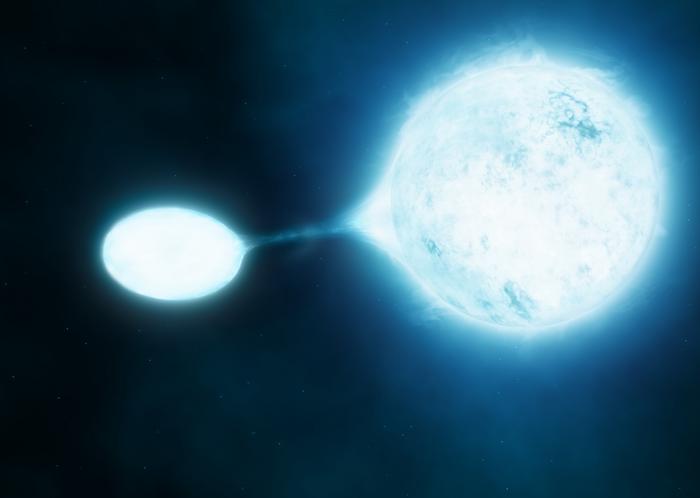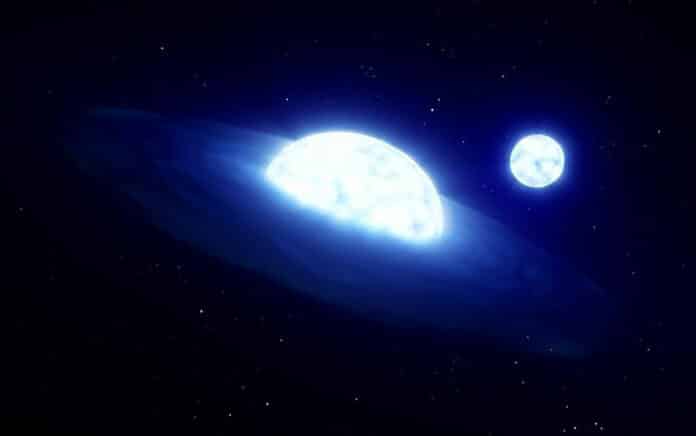A groundbreaking discovery by the University of Leeds scientists challenges astronomers’ understanding of some of the biggest and most common stars in the Universe. Scientists found evidence that massive Be stars, believed to exist in double stars, could be “triples.”
What are Be Stars?
Be stars have been known for about 150 years. An Italian astronomer, Angelo Secchi, discovered the first star in 1866.
Be stars are a diverse group of stars having emission lines and B spectral types. A more specific definition of these classical Be stars is a non-supergiant B star whose spectrum contains one or more Balmer emission lines or had at some point in the past.
The latest discovery:
Until now, astronomers believed that Be stars usually hung out in pairs, known as binary systems. It was like having a cosmic dance partner.
However, scientists now claim to have proof that these stars indeed occur in triple systems, with three bodies interacting instead of just two, after analyzing data from the European Space Agency’s Gaia satellite.
The astounding finding has the potential to completely change our knowledge of these objects, which are a subset of B stars and are regarded as a crucial “test bed” for the development of hypotheses on the general evolution of stars.

These Be stars are encircled by a distinctive gaseous disc resembling Saturn’s rings in our solar system.
According to astronomers, the discs might have formed because of the star’s rapid rotation and interaction in a binary system.
PhD student Jonathan Dodd said, “We observed how the stars move across the night sky, over longer periods like 10 years, and shorter periods of around six months. If a star moves in a straight line, we know there’s just one star, but if there is more than one, we will see a slight wobble or, in the best case, a spiral.”
“We applied this across the two groups of stars that we are looking at – the B stars and the Be stars – and what we found, confusingly, is that at first, it looks like the Be stars have a lower rate of companions than the B stars. This is interesting because we’d expect them to have a higher rate.”
Scientists also looked at a different data set: they wanted to see if other companion stars were further away. They found that at these larger separations, the rate of companion stars is very similar between the B and Be stars.
They deduced that a third star frequently enters the picture, pushing the companion toward the Be star until material can be transferred between them to form the distinctive Be star disk. This could also explain why we can no longer see these companions; when the “vampire” Be star sucked in so much of their mass, they became too small and dim to be seen.
The finding may profoundly affect our knowledge of black holes, neutron stars, and gravitational wave sources, among other fields of astronomy.
Why does it matter?
Professor René Oudmaijer, from the University’s School of Physics and Astronomy, said, “There’s a revolution going on in physics at the moment around gravitational waves. We have only been observing these gravitational waves for a few years now, and these are due to merging black holes.”
“We know that these enigmatic objects – black holes and neutron stars – exist, but we don’t know much about the stars that would become them. Our findings provide a clue to understanding these gravitational wave sources.”
“Over the last decade, astronomers have found that binarity is essential in stellar evolution. We are now moving more towards the idea that it is even more complex than that and that triple stars need to be considered.”
“Indeed, triples have become the new binaries.”
Journal Reference:
- Jonathan M Dodd et al., Gaia uncovers difference in B and Be star binarity at small scales: evidence for mass transfer causing the Be phenomenon, Monthly Notices of the Royal Astronomical Society (2023). DOI: 10.1093/mnras/stad3105
